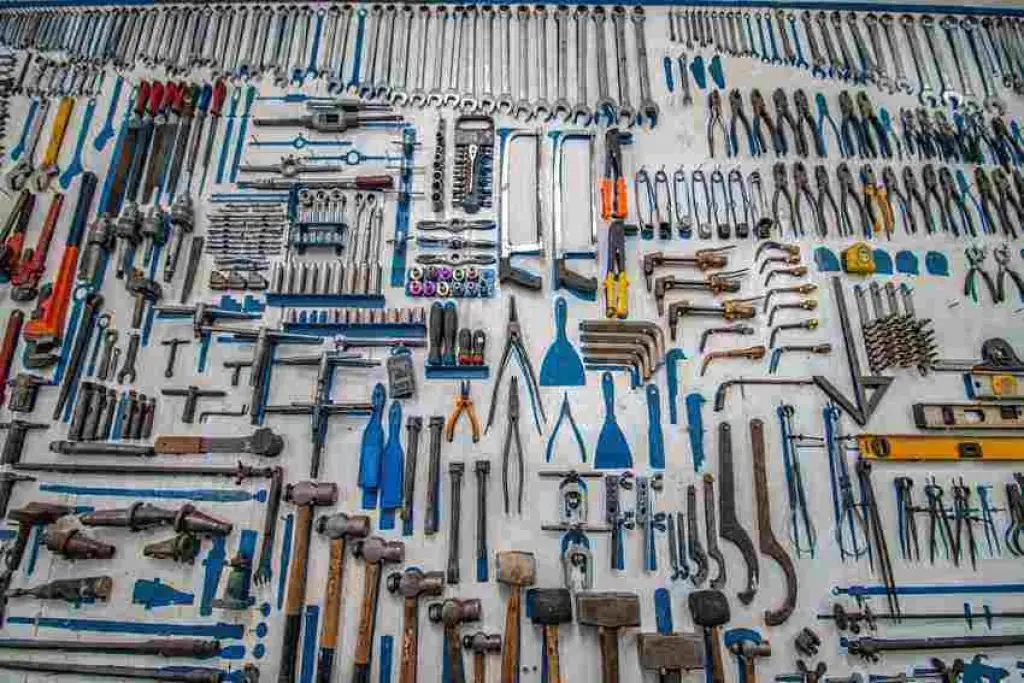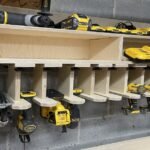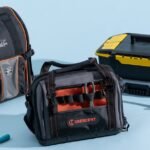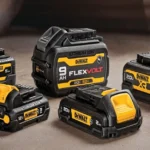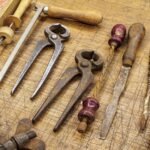If you are involved with HVAC-related jobs in homes, offices, hotels, industries, or anywhere else, you will find that thermal heat control is an important issue everywhere.
Thus, you can easily understand the importance of the basic HVAC tools list. You must own these HVAC tools for performing your tasks as an HVAC engineer or technician.
This article is a compilation of the necessary HVAC equipment list. Let’s check the complete HVAC tool kit!
What are the Basic Tools for HVAC?
HVAC technicians need various tools for their work. These include basic hand tools, advanced tools, sheet metal tools, repairing tools, safety tools, air conditioning tools, and many more. Below are the important types of HVAC tools.
Basic Hand Tools Used in HVAC
| Tool | Purpose |
|---|---|
| Thermometer | Measures temperature changes in HVAC systems. |
| Hammer | Used for various tasks, lightweight preferred. |
| Screwdrivers | For hex, flat, and Phillips screws. |
| Multimeter | Measures voltage, current, resistance. |
| Pliers | Cuts wires, bolts, pipes; insulated for safety. |
| Wrenches | Connects plumbing and gas lines. |
| Tape Measure | Measures installation spaces, 25 feet preferred. |
| Wire Strippers | Strips cable ends for reconnections. |
| Leveler | Checks if installations are level. |
| Drill | Cordless drill with extra batteries. |
| Sawzall | Cuts metal, pipes, drywall, and wood. |
Hand tools are always beside you even in tight spaces. These tools are used to train the HVAC apprentices. So, sometimes they are referred to as training tools. Some essential hand tools for HVAC systems are discussed below.
Thermometer
Temperature change measurements for HVAC works are very crucial on a routine basis. It determines whether there is any need for refrigerant to run the equipment. HVAC thermometer is different from the usual thermometer that is used for measuring a person’s fever.
To measure temperature accurately, HVAC technicians use infrared digital thermometers. Some of these thermometers can take recordable readings of overheated motors, compressors, and breakers which are very helpful for industrial work.
Hammer
Hammer is a mandatory tool for most job types. HVAC technicians need a hammer for various tasks. You need to take a lightweight hammer for HVAC systems. Fiberglass construction makes the hammer pretty durable.
The carpenter-style hammer is a good choice as its claw is curved and helps HVAC technicians in different ways. You can attach a hammer to the HVAC operators’ tool belts.
Screwdrivers
There are different types of screwdrivers and nut drivers in the market. The common ones for HVAC technicians are 1/4”, 5/16”, and 3/8”. You should also take big and small insulated flatheads and Philips screwdrivers as well. Many HVAC systems have hex-head screws and bolt screws.
Today’s interchangeable drivers accumulate all the sizes and types that you need. Make sure, the screwdriver’s handle is insulated which will protect you from electric shock.
Voltmeter or Multimeter
A voltmeter is not just a voltage-measuring device. It’s a safety precaution instrument also. The multimeters are more than that, they can read voltage levels with the current rating, resistance, and much more.
Pliers
You need different pliers to cut wires or deal with bolts, and pipes. For different repairs and installations, you need small, medium, and large sizes of pliers. The most common useful pliers are wire-stripping, needle-nose, linesman, open-face, channel-lock, etc. You need to ensure that all of them have insulated handles. They are also a great tool for electricians.
Wrenches
Many HVAC systems need to be fixed with plumbing connections and natural gas lines. To connect them pipe wrenches are necessary. In handling different situations, you need to take a full set of pipe wrenches and crescent wrenches with variations of sizes.
Tape Measure
This is another chief instrument for HVAC technicians. You should take double-sided marking and at least 25 feet of measuring tape to measure various distances. The unit is used to measure space for furnaces, outlets, or AC units. Most of the quality HVAC tool bags have dedicated tape holders.
Wire Strippers
Sometimes, you need to reconnect the cables. The strippers are used to strip the terminal of the cable and connect them in the end with wire nuts. It is easier than using the knife to peel the wire’s covering back.
Leveler
A leveler might be helpful after installing AC units, thermostats, and furnaces to check whether they are properly leveled or not.
Battery-Powered Drills
HVAC technicians have to use battery-powered cordless drills frequently. You may need to run wires in the attic or closet, so drilling the floor is necessary. We recommend you take variations of drill bits for making different sizes of holes.
You also need to carry an extra battery set, so that it can be useful in your urgency. Usually, HVAC toolsets or electrician tool belts have drill-holding capacity.
Sawzall
This is a handy tool for HVAC techs. You can cut different things without changing saws. The Sawzall or reciprocating tool can cut through sheet metal, pipes, drywall, wood, or old condensers. HVAC techs need both circular and reciprocating saws but the Sawzall is a convenient choice.
Specialized HVAC Equipment List
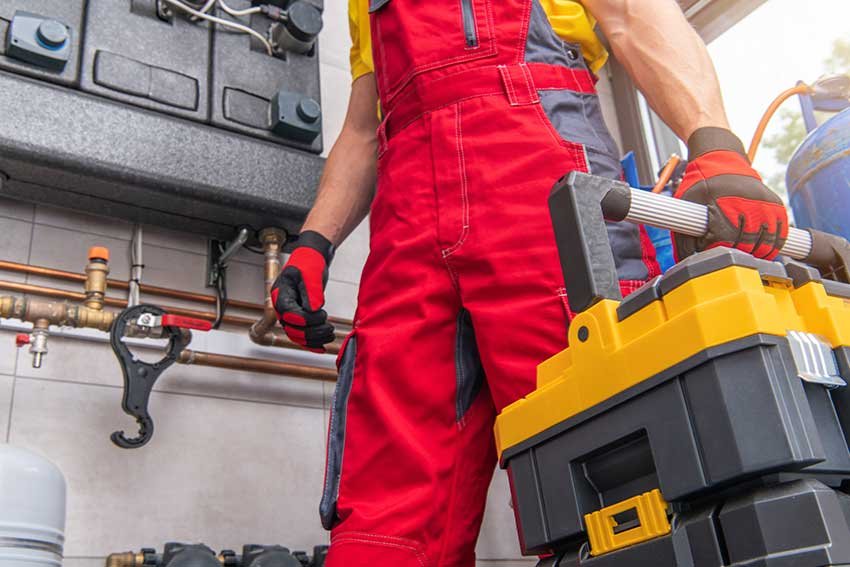
Sometimes HVAC technicians need variations of specialized tools to perform their tasks. A few important of them are discussed below.
Extension Cord
HVAC mechanics oftentimes need to power up away from the electrical outlets, in this instance, extension cords help to extend the electricity far away. The usual domestic extension cords don’t stand up to the power load that HVAC techs need.
But the specially made industrial-grade extension cord is durable and supports the HVAC job site. We recommend taking the thick extension cord that lasts longer, having a length of 50 feet or more.
Core Removal Tool and Caulking Gun
When the service lines are largely damaged or broken. The core removal tools will remove and replace the valve cores and prevent discharging of the refrigerant. After that, you need to seal and fix the duct holes. In this case, a dripless caulking gun will help you complete the project.
The important features of the caulking gun are a spout cutter, seal puncturing, ladder hook, and an easy-load front cap. This will help you to finish the project professionally.
Four Step Ladder
The step ladder is needed for HVAC technicians, especially in fieldwork. Usually, a four-step foldable ladder that comes with at least four feet of height is a good choice for HVAC tasks. The unit is lightweight enough, so it won’t make you loaded heavily.
Wet/Dry Shop Vac
When you need to vacuum out clogged drain lines, the wet/dry shop vac will be convenient for you. This is designed specifically to clean up liquid spills, but it can clean dust and other solid dirt also. The shop vacuum is useful in all working areas and homes.
Nitrogen Regulator
This professional HVAC tool works as a pressure control valve during purging and testing refrigeration and air conditioning systems. It prevents dangerous explosions and ensures no contaminants are left behind in the units.
Leak Detector
This tool is used to find refrigerant leaks easily and quickly. You also need to soap and bubble test, this will confirm the exact location of the leakage.
Megger
Megger is an easily portable instrument that can measure the insulation of electrical machinery. Electrical machinery insulation resistance degrades over time. In this case, this measuring instrument helps the HVAC technicians. It may come with mechanical and battery-operated options.
Psychrometer
This measures the amount of airflow and air mixtures. It is used mainly to read relative humidity. Nowadays, psychrometer is not seen in the average job fields. But it’s helpful when you are trying to nail your target superheated.
HVAC Sheet Metal and Ductwork Tools

While working with sheet metals and ducts, HVAC technicians need a variety of tools. They are-
Hand Seamers
Sheet metal hand seamers are used to shape, bend, and flatten the sheet metal used in the ductwork. With the hand seamers, you can easily bend flanges and edges in small increments where the usual breaks and rollers can’t fit. They are popular tools for the HVAC industry as well.
Some of them have springs, but all of them are marked with 1/4″ intervals to ease measuring while bending. They are also called tong or Fairmont sometimes.
Tin Snips and Shears
In HAVAC, tin snips, and shears are very important tools. Tin snips or aviators are sharp scissors that can cut thin metal sheets. There you find three types of tin snips- left-handed or reds, right-handed or greens, and straight or bulldogs.
Shears are like tin snips, but they are good for the straight-line cut. Make sure, the handles are insulated.
Metal Crimper
Sheet metal crimpers are handy tools in HVAC, roofing, and appliance installation applications. They are used to crimp, cut, and strip various gauges of sheet metal. These tools work by squeezing the handles and inserting the metal sheet into their jaws. They have usually one, three, or five blades.
Staple Gun
The staple gun or powered stapler is a necessary handheld tool for ductwork. They can be used for various tasks such as insulation, roofing, wiring, and many more. The device is sometimes called a trigger tracker. There you will find three types of staple guns- manual, electric, and air-filled. The electric staplers are quicker models than hand-powered ones.
Scratch Awl
This is another convenient tool for HVAC workers. The awl is used to draw a line in the sheet surface that helps to cut it straight with a chisel or handsaw. You can also use this to punch holes in sheet metal, ductwork, or wood.
HVAC Tools Used for Refrigeration and Air Conditioning Work
To install and service air conditioning and refrigeration systems, you need numerous tools. Sometimes these tools are also called HVAC repairing tools. You will get some of them from the employer, but you have to know all of them.
Refrigeration Gauges
They are used to read and hold the pressures of gases and liquids in a cooling system. By measuring the fluid pressure, you can easily understand, whether there is any leak or need to complete evacuation and recharge.
Refrigeration gauges may come in analog or digital styles. The gauges have brass or aluminum manifolds. The manifold gauges are a great choice for technicians. Nowadays, digital gauges are gaining popularity among HVAC technicians because of their accuracy and no need for a conversion table.
Tubing Cutter
Metal and PVC tube cutters are entry-level tech learning for HVAC technicians. They are used to cut copper lines in the air-conditioning system. You need to tighten the cutting wheel clamp after two or three rotations. We recommend you start with the smaller set.
To do this, you need to cut the pipes carefully, don’t rush too much. After the cutting is over, remove the burrs with the de-burring tool.
Vacuum Pump
HVAC technicians need to remove moisture occasionally from the HVAC system, vacuum pumps are very essential there. You will find different types of vacuum pumps such as the positive displacement pump, momentum transfer pump, regenerative pump, entrapment pump, and many more. So, you need to choose the right one for you.
Refrigerant Scale
This is another important item that is needed when charging air conditioners and compressors. The scale will let you know when the tank is full or not. This also maintains the temperature of the unit and identifies the leakage. It ensures the right amount of refrigerant in the air conditioning or compression system.
Coil Fin Straightener
When the coils of the AC condenser get dirty, twisted, and clogged, you need to clean them to improve heat exchange and airflow. In this instance, a coil fin straightener helps you a lot. By cleaning the coils, you can improve the AC’s efficiency at the same time the electricity flow rate will be decreased heavily. It’s a very cheap tool but helps you greatly.
Refrigerant Recovery
The recovery machines are used to remove the refrigerant from the cooling machine according to EPA standards. HVAC technicians use them before the vacuum process. These tools are used in air conditioners, refrigerators, or freezers.
HVAC Safety Tools
An HVAC technician needs some safety tools and accessories that make a safe workplace for him/her. These include:
| Shields ears from the noise of motors and machinery, reducing hearing damage. | Purpose |
|---|---|
| Gloves | Protects hands from cuts, burns, and cold leaks; provides a secure grip. |
| Ear Plugs | Provides visibility in dark areas; can be hands-free when mounted on a belt. |
| Safety Goggles | Guards eyes from dust, debris, and sparks in industrial areas. |
| Hard Hat | Protects head from falling objects; suitable for extreme temperatures. |
| Footwear | Skid-free, water-resistant; steel toes and rubber soles add safety. |
| Flashlight | Provides visibility in dark areas; can be hands-free when mounted on belt. |
Gloves
A good pair of gloves is necessary for HVAC mechanics. They help the users to grab small tools, screws, and bolts firmly. The gloves must come with a thick and protective shield that defends your hands from the risk of cuts, gouges, and dings while working on the sheet metal and stirring parts of the HVAC tasks.
They also protect your hands from burning by pipe heat and cold leaking refrigerant. Be sure, your gloves fit your hands correctly and give great sensation to your hands.
Ear Plugs
Working near motors, power tools, machinery, or loud engine areas regularly may lessen your hearing power. To protect your hearing, you need earplugs or muffs. Make sure the ear devices are soft enough and come with industrial ear protective features.
Safety Goggles
Wearing safety goggles or glasses is important to work in industrial areas. As there is dust and metal debris in the air, they could seriously damage your eyes. It also protects your eyes from sparks and allows you to see even in humid conditions.
A Hard Hat
Your head needs protection too, as heavy items can fall upon your head. A hard hat protects your head from getting hurt. It also assists in working in extreme temperatures. You have to take a comfy support helmet that won’t be hot-wearing for a long time.
Footwear
A good pair of footwear can protect you from unwanted accidents. They help you to work both outdoors and indoors. Skid-free and water-resistant materials are a good choice. You also take work boots with rubber soles and steel toes; they will provide a great working experience.
Flashlight
This is a handy option for HVAC technicians, as they need to work in darker places often. You can’t work without proper seeing. The flashlight or headlamp will ease your task and make your hand free. You can easily hang this with a leather tool belt.
HVAC Business Tools
Business owners need some HVAC tools that will help them to perform their tasks in the right way. These are some monitoring services that help to grow the business from the root. These include-
Communication Capabilities
You need to open a communication line when the technicians are out on the job so that you can know everything goes smoothly. Work phones are a good aspect of communication, but app-based communication is perfect nowadays.
Mobile HVAC Software
This is not actually a tool in the conventional sense, it is a full mobile software solution. With the HVAC mobile app, you can easily manage and communicate with the employees and customers. This will help you to record contact information, scheduling, service history, equipment records, and more things in one tap on the screen.
Also Read: Best HVAC Installer Tool Belt
Final Words
This is a very basic and essential guide for HVAC workers. Whether you are an HVAC technician or a business person, these HVAC tool kits will be handy for you. We included here different types of tools for your HVAC works. Before starting a new project, verify you take all the essential HVAC technician tools. Hopefully, you got the desired HVAC tool lists.
FAQs (Frequently Asked Questions)
What are HVAC equipment?
HVAC equipment refers to systems and devices used for Heating, Ventilation, and Air Conditioning. These include furnaces, air conditioners, heat pumps, and ventilation fans that help control the temperature and air quality in homes and buildings.
Which are the HVAC Diagnostic Tools?
Different tools are used for HVAC diagnostic and maintenance purposes. Most of them are already discussed above. Several of them are staple guns, pliers, pipe cutters, thermometers, hand seamers, vacuum pumps, refrigerant scales, manifold gauges, crimpers, etc.
Are the Basic HVAC Tools Fit in The HVAC Tool Belt Set?
Yes, most of the prime HVAC tools fit in the HVAC installer tool belts and bags. You can easily store the hammer, thermometer, tape, screwdrivers, saws, and many more items in the belt set. Even the carpenters’ tool belts also support you sometimes.
What are four power tools specific to HVAC?
Four common power tools specific to HVAC work are: Drill, Refrigerant Recovery Machine, Vacuum Pump, and Pipe Wrench
Which tool is used to detect leaks in an HVAC system?
A leak detector or electronic leak detector is commonly used to find leaks in an HVAC system. These tools can sense refrigerant leaks and help technicians locate the source of the problem quickly.

